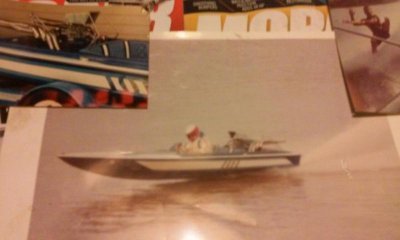It's been so long saying the exact size of jetting, I'd just be guessing...
They are adjustable on each port too, both fuel & N20, different companies have differ orifices & specs,
IMO you would really need to get a good baseline from a N20 company,
on there specific nozzles & jetting, but then go a little fatter on the fuel side jetting just to be safe,
then fine tune it after reading the plugs, or exhaust gas temps/ O2 sensors...
Too fat is better than too lean, but can cause some issues too with wet spots & burning...
Fouled plugs & a bad run is far better than a leaned out burnt piston...
If done correctly it is relatively safe, I know all the bad stories Blah Blah Blah,
most are from people that were clueless &/or on the ragged edge too...
You'll need to set aside a whole test & tune day, at the track or pay for dyno time, to get it tuned in...
If your only trying to add just enough to just get you over the hump, I'd suggest to creep up on it,
don't go to the biggest HP jets out of the gate...
I'd learn to tune it 1st, read your plugs, check valve lash, do a leak down test between passes etc....
If you do go the port/fogger nozzle route,
make sure the nozzles point at the top/outside of the intake bowl/port runner
& at the intake valve stem, not the floor or sides "ever"...
Also the N20's fuel side of the system needs to be a stand alone system,
that will flow between 5.5psi & 8.5psi @ 150-170gpm, for a port nozzle kit
more depending on hp jetting & size of solenoids orifices etc...
I'd side on the larger side, you can always lean it down...
I'd also run it a 1/2# fatter than they recommend on the fuel side too,
creep up on the leaning it down to be fast...
All solenoids aren't created equal,
so do some research, there are different orifice sizes & flow rates/sizes...
That can change jetting drastically too...
You can still use the same fuel cell, if it's big enough,
but use a separate fuel pump {IMO 170gpm flowing for about 300-500hp should be safe}
& separate bypass style regulator
{not a dead head type, they are too inconsistent, peak/spikes & drops}
Bypass helps to keep fuel cooler & flowing at a constant PSI is by far the best...
Also separate assoc. plumbing lines, to & from the fuel cell to the solenoids & use y's "not tees" wherever possible...
As few 90*'s as possible too...
Also even if you use a WO throttle micro switch, to activate the solenoids/N20 system,
It can be run thru the retard & I'd suggest they be routed thru a retard box or a stand alone N20 controller...
What I would do was back out about 2* at the initial hit,
then continue to progressively taking out more timing about 2* at a time,
at a rate of about 10*-12* total retard, for a 300hp-500hp fogger kit at peak RPM
how fast depends on when it activated & for how long
& maybe use a dip or pressure switch, to kill the system, shut down the solenoids,
if oil pressure or fuel or bottle pressure drops below a safe level,
almost everything can be done thru electronics now...
I can't really recommend any of the current stuff...
I don't know or have ever used allot of it now...
A purge valve/solenoid {activation button} is no big deal,
just put a smaller solenoid {& separate purge button wired in too}
the purge valve/solenoid needs to be teed in just before the entry side of the N20 solenoid,
"don't make it a choke point", installed before it goes to the port nozzles solenoid,
it purges it to the atmosphere, you'll need to route a small piece of stainless tubing out of the engine bay,
it just helps to get liquid N20 to that point before the solenoid & not just C02 & big fat spot {could even go lean},
too much fuel & not enough N20, if it's not purged...
Even if you have it "turning on/activated" thru a WO throttle/micro switch everything on the solenoids & fuel side electronics
all should be ran thru relays, to help avoid electronics spikes & voltage drops...
Also I'd suggest to have an arming switch/toggle like an override switch, everything run thru,
for all it's 12+ volt power, it's a failsafe if nothing else...
Make sure you have really good grounds too, it's basically like having a direct short when all the solenoids are activated...
Make sure your battery is at full charge too, when ever your attempting a N20 run avoid spikes & drops...
You can use a manual activation push button too, if you just want to use it sparingly or just in the lights etc.,
just make sure it's routed thru a retard to help save the motor...
Not sure I helped much,
ask away if you have other questions, I'll try to explain what I still remember...

















